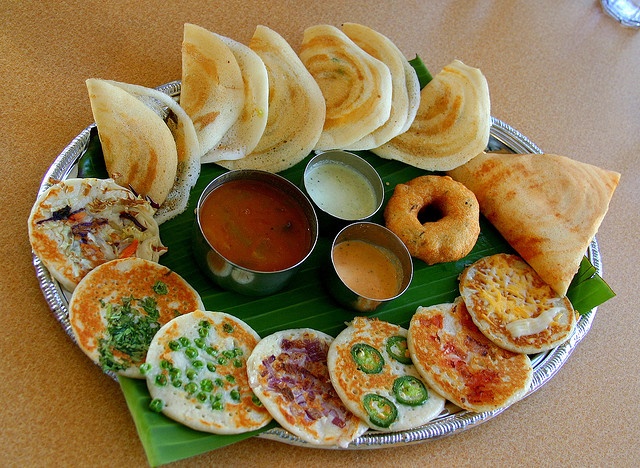India is one of the most diverse countries on the planet, not only in terms of language and traditions, but also cuisine. Many people in the Western world tend to use the umbrella term of ‘Indian cuisine’ to describe the dishes of the entire country; yet every region has its own unique methods and ingredients – so this sweeping statement couldn’t be further from the truth. Two cooking styles that differ the most are that of the North and South. Because the Aryans eventually settled in the North and the Dravidians came to the South, they have evolved to cook with some major variations.
The most noteworthy difference is the starches used. Wheat is the staple crop in the mild climate of the North, so the majority of dishes revolve around rotis, chapattis, parathas and naans. In comparison, the South has a tropical/semi-tropical climate, and so yields rice much better. As a result, it is a prominent feature and is incorporated into many southern dishes.

As a brief rundown, here are dishes you are likely to discover in the North of India:
Lots of flatbreads and gravy-based dishes can be found in the North. In fact, many dishes you may be used to seeing on curry house menus in the UK originate from the northern regions of India – although a lot of time they are very different to the original recipe. Examples include the ever-reigning naan bread, samosas, rotis and dishes such as alooghobi (potato and cauliflower) and palak paneer (spinach and cheese).
In terms of spice mixture powder, garam masala is the go-to blend used in many dishes. For an element of sourness, amchoor (dried mango powder) is usually used as a souring agent in northern Indian dishes. When using dried herbs, some sauces are made fragrant with the use of dried fenugreek leaves. Finally, a meal is usually topped off with a steaming cup of chai.
And here are dishes and ingredients you are likely to come across in the South of India:
In general terms, cooking in the South usually involves basing a dish around rice or lentils. For example, popular dishes such as idli (steamed lentil rice cakes), dosa (a lentil and rice thin pancake), saaru/rasam (tamarind, tomato and lentil soup) and huli/sambar (spicy vegetable and lentil stew) all originate from southern India.
The go-to spice mix of the South is usually a sambar powder known as hulipudi. Tamarind is used as the souring agent in stews, as opposed to mango powder, and dried curry leaves are used to flavour gravy-based dishes or soups. In terms of a hot beverage to finish a meal, a unique blend of coffee, made with chicory, is sometimes served.
If you think all regions of India cook the same dishes, you’d certainly be mistaken. Often, the ubiquitous high-street curry house serves up similar versions of the same dishes. For something entirely different, have you ever considered booking a table at one of London’s fine-dining Indian restaurants? Here, a team of regional chefs have created an innovative menu, highlighting some of the show-stopping dishes from all over the country, ensuring you will no longer think of ‘Indian food’ in the same way again.























